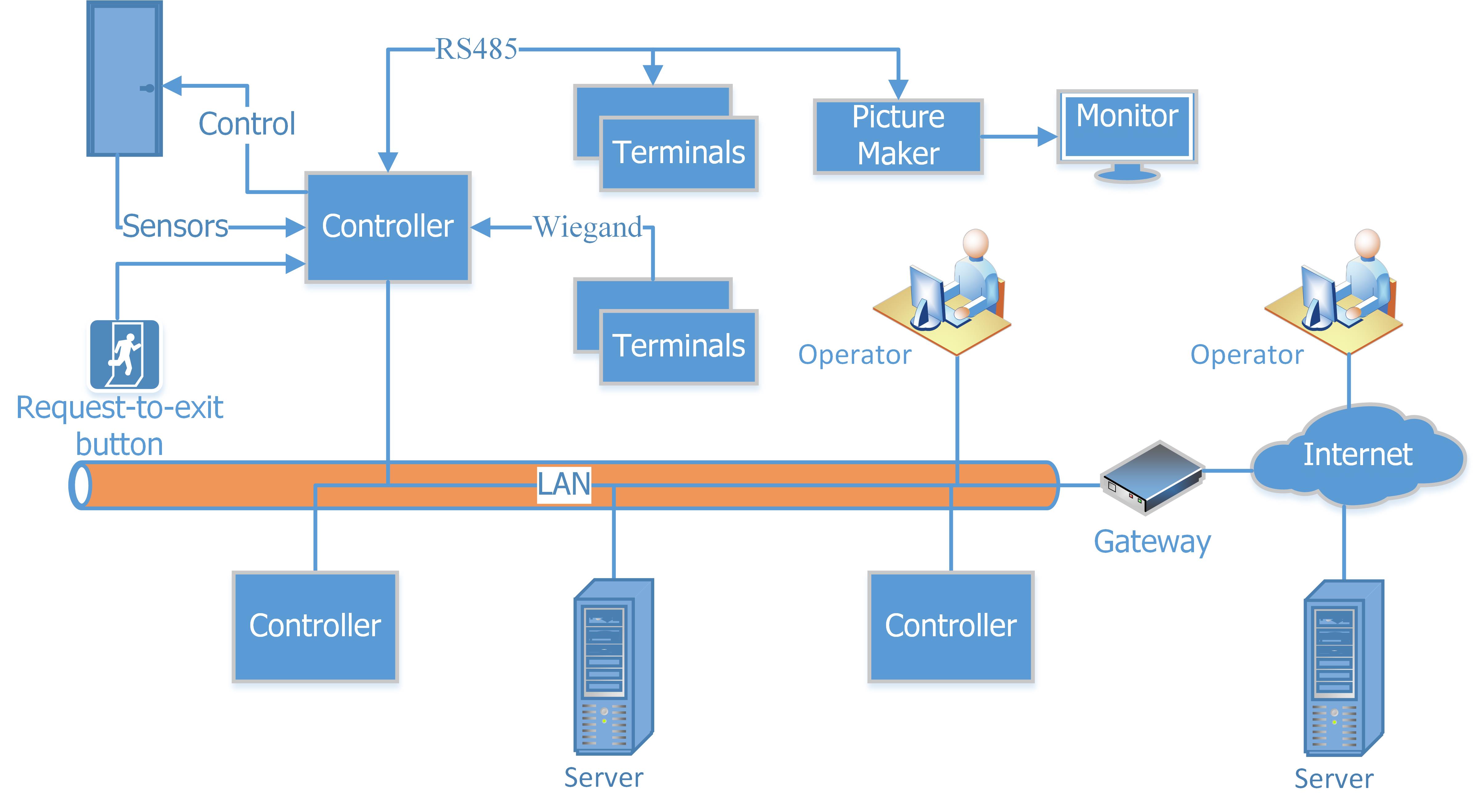
Saman Access Control software is a general network based solution fulfilling the demanding requirements of physical access control in large organizations. Granting single and group access rights, defining operator groups with restricted access rights to software components and card holder groups and providing a variety of reports makes it easy to manage an organization with many card holders and users. As it is a web application, the remote users don't need any software but a browser installed on their computers to manage access rights, monitor the gates and do the other functions provided in the application. To send SMS in certain conditions a panel has been designed as a separate service that can be enabled or not.
The system hardware at each gate is divided into three parts: the controller, the terminals and the picture maker. The user credentials are received from the users by terminals and sent to the controller for authentication. Card, PIN, fingerprint or any combination of them are the methods now available for identification. Secure data stored in the card memory can be used for authentication as well as simply the card serial number. The controller uses its stored access rights in its own memory to allow or disallow the person to access the gate. The generated log is stored in the memory to be sent to the server when there is a connection. If a picture maker is used in the system, proper information can be displayed on the screen upon a granted access or a denied attempt. The controllers provide different input and output ports to connect to different sensors and buttons and driving different actuators including various electrical locks and turnstiles. In some controllers a Wiegand interface has been provided to make it possible using third party standard Wiegand card readers and/or keypads as terminals. Also in some models a DC UPS is integrated into the controller to keep the system operational upon a power cut. In all models, the controller can be configured using the web to make the gate open to any person according to a time schedule.
The anti-passback function has been implemented in two different ways: controller-based or card-based defined by whether the last entrance or exit of a person is stored in the controller or the card. The second method makes it possible to detect passback on a group of gates used for the same zone.